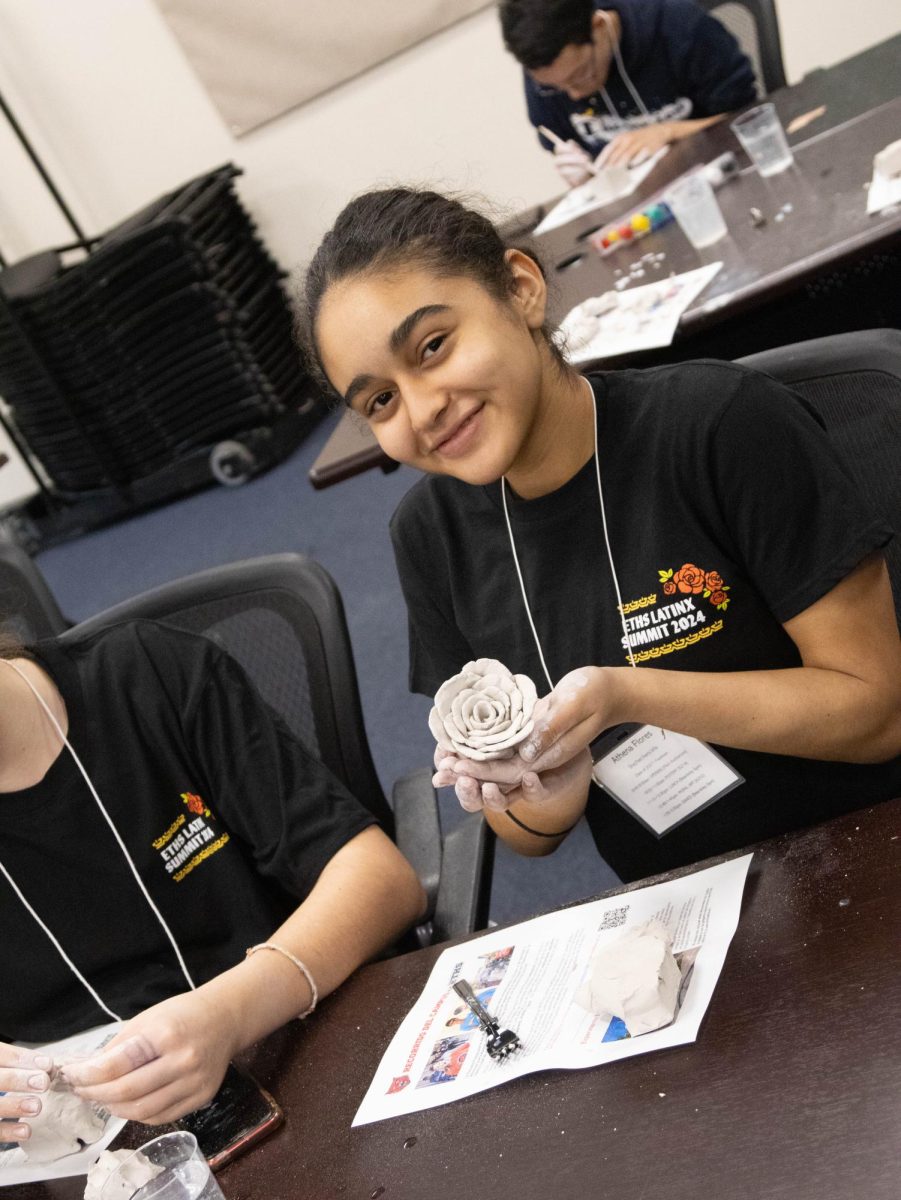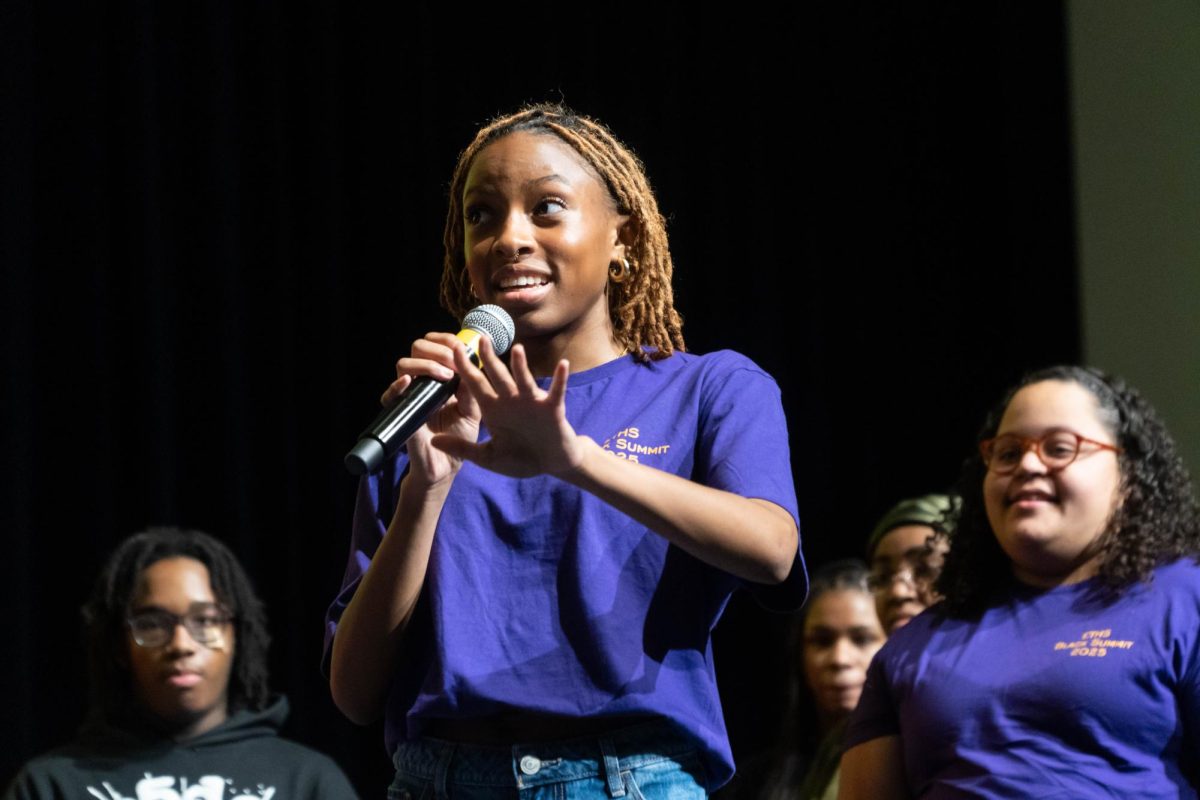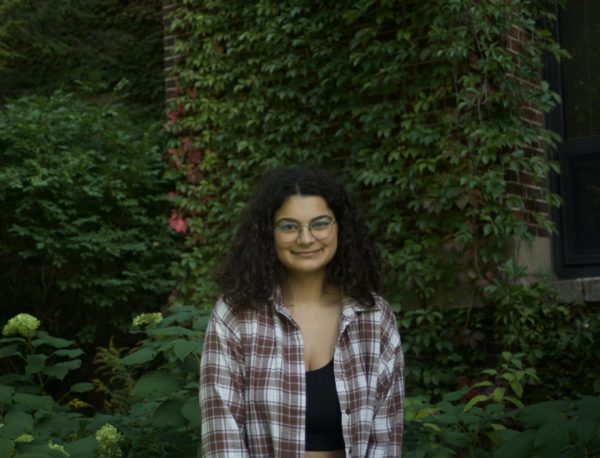On Saturday, Feb. 17, hundreds of Evanston students aged 14 through 18 gathered for the 32nd annual Mayor’s Summer Youth Employment Program (MSYEP). With over 1000 people registered, the Robert Crown Community Center was abuzz with anticipation, crowded with long lines of students eagerly awaiting an opportunity to impress employers, find summer employment and create permanent connections. This was Robert Crown’s second year hosting the event, with the Fleetwood-Jourdain Center and ETHS both having received complaints of being cramped and making students wait outside in winter weather in past years.
The program offers participants up to nine weeks of introductory work opportunities in various job sectors and industries across Evanston, including the city police and fire departments, private camps and medical spaces.
“[Finding employers is] a lot of word of mouth,” said Greg King, Evanston Youth and Family Program Coordinator and MSYEP overseer since 2021. “Many returning employers have been a part [of the event] for years, but we do try to listen to student feedback and introduce new opportunities.”
One returning employer is Natalie Callee, program director for the Ridgeville Park District, who has been a part of MSYEP since 2016 and does over 90 percent of her staffing from the event.
“I heard about the program through my relationship with the City of Evanston’s Parks and Recreation Department,” Callee said. “The organizers always do a great job—it’s a big event with a lot of moving parts and it’s always terrific.”
King works to keep the event fresh and suited to what students need in terms of employment that year, implementing not just location changes but shifts in the very foundations of the program.
“I’ve seen [MSYEP] change a lot,” said senior Maddelena Rauscher, who has attended the event since her freshman year. “The first year I came, it was during the pandemic, and they made me upload my whole resume, a cover letter and a ton of additional information online to sign up. It was really intimidating for a freshman. Last year the process of signing up was very smooth. It was so much better with none of the pain of before.”
This year also marked a significant increase in wages, with pay rates increasing from $10 to $13 an hour. Changes such as the wage increase and ease of registration help to advance King’s dream of bringing as many students into the workforce as possible.
“My dream is to, firstly, get as many students as possible registered. But further than that, get them hired,” King said.
The process from registration to employment is a long one, with checkpoints throughout to ensure that all students are set up for success. When students first arrived at Robert Crown, they were separated into those who completed the Job Readiness Training program prior to the event and those who had not, with students who had gone through the program before being given express access to the employers.
“Leading up to the event, our main goal is to get job readiness training information out for students,” King said. “With hire ability being at the forefront of the MSYEP team’s mind, the extra boost that the preparatory information provides can be invaluable”
After the potential employees arrive, they are lined up in the main lobby of the building before being led in groups to a “hype room”, with volunteers ready to pass out pamphlets and give comfort and advice to the students. Kristen Kennerd, the Deputy Director of Social Work Services at the James B. Moran Center for Youth Advocacy was stationed in front of the room, guiding students through the halls and offering a break from the monotony of waiting to meet the employers.
“[The Moran Center] is here to help and support the kids that we work with and support MSYEP,” Kennard said. “I like interacting and communicating with [the students] and helping them feel empowered. It’s great to watch their confidence boost.”
From the “hype room”, students are led upstairs to listen to a talk on interview tips. Topics such as handshakes, breath and posture were discussed, and with one final message of ‘confidently be yourself,’ the students set off to the final step before the actual interviews; the selection.
Many students go into the fair knowing what jobs or industries they are applying for; however, for a large percentage, the fair is an opportunity to find a passion and pursue it.
“The goal is to expose people to entry-level jobs firstly—but it’s also career driven, with exposure to many career opportunities,” King said. “The last step before the employers and potential employees meet involves the students looking through the catalog of employers and selecting the specific people and companies they wish to speak to and, ideally, work for.”
Once they have an idea of who to approach, students take their newfound interview skills and resumes and finally enter the gymnasium to meet their future summer employers. The process is long and arduous, though in the long run, very rewarding for many students.
“I was able to get a job I really liked every year,” said junior Elias Ginsberg. “Though I wish less of the process was waiting around. It felt very long-winded and many of the tables were empty, like the employers left or didn’t show up.”
The amount of empty time in which students were standing in stagnant lines while waiting for the next step of the process was a point of contention throughout the event.
“By far my least favorite part is standing in line,” Rauscher said. “Cramming everyone together and making them wait in line is ridiculous.”
King hopes to improve upon these areas in the following years, as he is always looking for ways to make the event more enjoyable for both employers and registered students.
“It will be great for the young people to continue giving feedback so that I can make that happen,” King said. “[We want] every student to get as involved as possible and have an impactful summer.”







